Photographs: Courtesy NASA Yasmin Rajendran
40 years after man landed on the moon, Yasmin Rajendran, 13, pays tribute to that giant leap.
Neil Armstrong and Buzz Aldrin had a problem. The man who first got out of the lunar module and walked on the moon would be famous. Now which of them would be it?
They did not have to worry. A bunch of officials had already held a conference in March 1969 to resolve the matter. They decided that Neil Armstrong, the commander of Apollo 11, should be the first to walk on the moon, just because he would be closer to the door.
And that is why, on July 20, 1969, we saw Armstrong, and not Aldrin step out onto the moon. And we heard him say the historic words: "One small step of man giant leap for mankind."
Of course, that was due to the static. What Neil Armstrong actually said was, "One small step for a man, a giant leap for mankind." But the correction came too late for most of us.
Yasmin Rajendran is a class IX student. She lives in Queens, New York.India, US and Soviet Union only countries to make an unmanned moon landing
Image: Apollo 11 emblemPhotographs: Courtesy NASA
On July 20, 1969, the world celebrates the 40th anniversary of the Apollo 11 mission to the moon. India is just starting out, with its Chandrayaan 1 having orbited the moon and having sent equipment down for the first time on November 8, 2008, and another moon mission in the works.
India, the US and the Soviet Union are the only countries to make an unmanned moon landing.
But the impetus for India came not just from the many space flights made, but the fact that men actually have walked the moon -- another heavenly body.
July 20 celebrates the accomplishments of all the countries that have participated in the space race. While it is a great day, it came at the expense of many lives. And it is clear that it is not easy or safe to leave Earth. Look what happened to space shuttle Columbia.
But July 20 marks a day we realised that we really could go where no man had gone before.
The spacesuits of the Apollo 11 astronauts were air-conditioned
Image: Michael Collins' suitPhotographs: P Rajendran
There are many stories about the Apollo 11 trip, and many of the memories are stories at the Smithsonian Air and Space Museum in Washington, DC. Besides all the equipment, you can find the logs, maps and star charts for the mission itself. To see the plans for the mission, you have to go a few blocks away, to the National Archives.
There are many spacesuits in the museum. The spacesuits the Apollo 11 astronauts used were air-conditioned and the astronauts had to wear sunglasses to protect their eyes from the sun. Why?
These astronauts were on the 'day' side of the moon where it is very hot so the suits are air-conditioned to keep the astronauts cool. They wore sunglasses to protect their eyes from sunlight. Because the spacesuits were inflexible the astronauts had to use instruments to pick up things they needed.
Yes, even in space you cannot forget to brush
Image: Oral hygiene kitPhotographs: P Rajendran
One such instrument was the trenching tool, which looked like a shovel and was used to dig out moon rocks. The large bulk sample scoop looked like a cereal box without one side. Attached to a rod, it was used to collect moon rocks, one of which visitors to the museum can actually touch. The astronauts did experiments, recording all their activities and the surroundings with a clutch of cameras.
Such hard-working astronauts had other important things to worry about, too -- like eating. But before, they had to keep their mouths clean, for which each astronaut had an Oral Hygiene Kit, which held dental floss, toothpaste and a toothbrush.
Yes, even in space you cannot forget to brush, even if the froth can get all around you if you are not careful. At the museum, you can see the brush Michael Collins used.
Armstrong, Aldrin and Collins used an exerciser to keep themselves fit
Image: Single meal in a packetPhotographs: P Rajendran
As far as the food went, it came in freeze-dried bags. All they had to do was open the bags and eat. They ate beef stew, fruitcake and coffee. For the stew all they had to do was add water.
The astronauts also had equipment made to help them to get rid of their waste. To get rid of urine, they used a Urine Collection Device. The urine was transported out of the device to a tank using a Urine Transfer Tube. This tank expelled the urine into space. There are more details we could go into, but perhaps we should leave that for the present.
Armstrong, Aldrin and Collins used an exerciser to keep themselves fit in the absence of the gravity that ensures people have good muscle tone. If they did not use their muscles long enough, it would become nearly impossible for them to walk on Earth on their return.
On their return they had to wear isolation garments
Image: Command Module ConsolePhotographs: P Rajendran
If landing on the moon in the small lunar module was hard, it must have been even harder for the astronauts in the small command module, lying back in a shaking metal and plastic cone and falling back to earth while trying to keep tabs through a complex control system. It had just one very heavy door but it could be opened in just five seconds.
Once the astronauts on the Apollo 11 returned, they had to wear a biological isolation garment intended to stop any living things from being transported back to Earth. They were kept at a Mobile Quarantine Facility for three weeks.
Later, scientist learned that nothing lived on the moon's surface and that they did not have to not keep the astronauts in the facility.
Collins could have become rich selling the equipment, but he did not
Image: Other equipmentPhotographs: P Rajendran
Now, before we wind up, we must recognise Michael Collins a man that people don't remember quite enough.
He was the man left circling Earth's satellite while Neil Armstrong and Buzz Aldrin left their marks on the moon. Later, the International Astronomical Union honoured him by naming an asteroid after him (6471 Collins).
He was also director of the Air and Space Museum from 1971 to 1978. It is his equipment that makes up most of what we see in the gallery devoted to the Apollo 11 mission.
We owe him a great deal of thanks for donating many of the things he used on the historic flight.
Collins could have become rich selling the equipment, but he did not. Instead, by donating them, he left us richer for his experience.

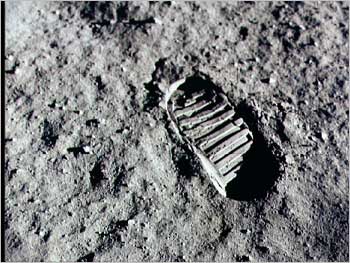


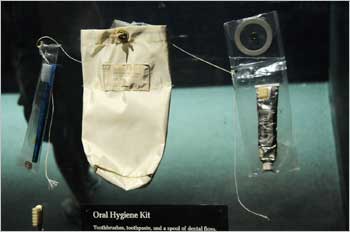
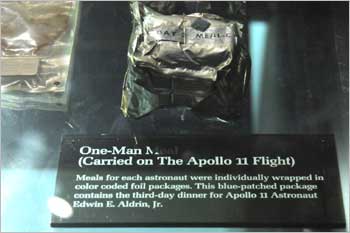
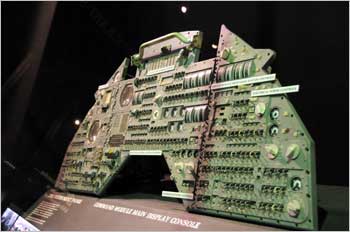
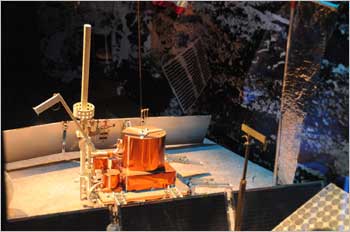
article